Links to external sources may no longer work as intended. The content may not represent the latest thinking in this area or the Society’s current position on the topic.
Hyperthermals: rapid and extreme global warming in our geological past
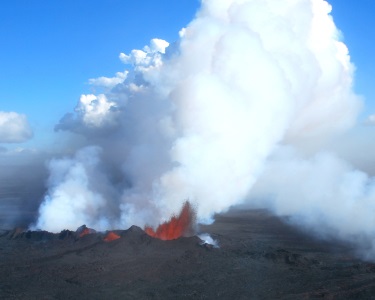
Scientific discussion meeting organised by Professor Gavin Foster, Professor Jim Zachos, Professor Dan Lunt and Professor Pincelli Hull.
Earth’s history is peppered with rapid and extreme global warming events collectively known as hyperthermals. Although none were as rapid as human-induced climate change, most are associated with major extinction events and were invariably caused by the injection of huge volumes of carbon into the ancient atmosphere. In this meeting we explore what we can learn about our possible future from these dramatic ancient events.
Attending the event
This meeting has taken place.
Meeting papers will be published in a future issue of Philosophical Transactions A.
This meeting was followed by a related satellite meeting (The causes, consequences and relevance of hyperthermals), which was held at the Royal Society at Chicheley Hall on 27 - 28 September 2017.
Enquires: Contact the Scientific Programmes team.
Schedule
Chair

Professor James (Jim) C. Zachos, University of California at Santa Cruz (UCSC), USA

Professor James (Jim) C. Zachos, University of California at Santa Cruz (UCSC), USA
James (Jim) C Zachos is a Professor of Earth and Planetary Sciences at the University of California at Santa Cruz (UCSC). He received his PhD in Oceanography from the University of Rhode Island in 1988, was a post-doctoral fellow at the University of Michigan, and a fellow at the University of Cambridge. Zachos’s research primarily focuses on the dynamics of climate and ocean carbon cycle coupling over geologic time, particularly during periods of rapid and extreme change. He has authored/co-authored 115 peer-reviewed publications on topics ranging from Eocene global warming and ocean acidification to Oligocene ice-sheet evolution, and was a contributor to the 2007 IPCC report. He is a fellow of the American Geophysical Union, the Geological Society of America, the Canadian Institute for Advanced Research, and the California Academy of Sciences, and is a recipient of the National Young Investigator, AGU Emiliani, and Humboldt Awards. He is also a member elect (2011) of the American Academy of Arts and Sciences.
| 10:00 - 10:10 | Welcome by the Royal Society & Lead Organiser | |
|---|---|---|
| 10:10 - 10:40 |
The Paleocene-Eocene Thermal Maximum: global warming, its relation to carbon injection, and its environmental consequences
Over the first millennia of the Paleocene-Eocene Thermal Maximum (PETM, ~56 Ma ago), global surface temperatures warmed by several degrees (Dunkley Jones et al., 2013). This warming roughly coincided with deep ocean carbonate dissolution (Zachos et al., 2005) and a negative stable carbon isotope excursion (CIE) recorded in organic and inorganic terrestrial and marine sedimentary components (McInerney and Wing, 2011), implying massive injections of 13C-depleted carbon into the ocean-atmosphere system (Dickens et al., 1997; Dickens et al., 1995). Here, the reconstructions of surface temperature across the PETM from crucial locations is reviewed, including recent data from the tropical band (Frieling, 2016; Frieling et al., 2017), and the stratigraphic relation between warming and the CIE will be discussed. Moreover, the data will be used to assess the ability of a current-generation fully coupled climate model to simulate Paleocene and PETM climates. The discussion will include the secondary impact of warming, notably hydrological change and ocean deoxygenation in marginal marine basins. 
Dr Appy Sluijs, Utrecht University, The Netherlands

Dr Appy Sluijs, Utrecht University, The NetherlandsAppy Sluijs (1980) is an Assistant Professor at Biomarine Sciences, Institute of Environmental Biology, Utrecht University, The Netherlands. Sluijs studied biology and biogeology in Utrecht and at the University of California at Santa Cruz, USA. Sluijs is a member of The Young Academy of the Royal Netherlands Academy of Arts and Sciences. He was awarded the Outstanding Young Scientists Award of the European Geosciences Union (EGU) in 2007. In 2010, he received the prestigious Vening Meinesz Prize for young geoscientists and the Heineken Young Scientists Award for Environmental Sciences. He is an editor of the open access journal Climate of the Past, published by the European Geosciences Union. His research focuses on reconstructing temperature, hydrology, biogeochemical cycles and sea level during episodes in Earth’s history that were characterized by rapidly increasing, or generally high concentrations of CO2 in the atmosphere. He combines micropaleontological and geochemical techniques to understand system Earth under ‘greenhouse’ conditions. Funded through an ERC Starting Grant, he has recently started to quantify the physiological and biogeochemical response of dinoflagellates to changing seawater CO2 concentrations and pH. This response may be developed into a proxy to reconstruct ocean acidification in the geological past. |
|
| 10:40 - 10:50 | Discussion | |
| 10:50 - 11:20 |
Capturing the global signature of surface ocean acidification during the Paleocene-Eocene Thermal Maximum
Geologically abrupt carbon perturbations such as the Paleocene-Eocene Thermal Maximum (PETM, ~56 Ma) are the closest paleo analogue to current anthropogenic carbon emissions. Associated with rapid carbon release are profound environmental changes in the oceans including warming, deoxygenation and acidification. To evaluate the global extent of surface ocean acidification during the PETM, a compilation of new and published surface ocean carbonate chemistry reconstructions from various paleoceanographic settings. Boron to calcium ratios (B/Ca) and boron isotopes (δ11B) are used in surface- and thermocline-dwelling planktonic foraminifera to reconstruct ocean carbonate chemistry and pH. Records exhibit a B/Ca reduction of 30-40 % and δ11B decline of 1.0-1.2 ‰ coeval with the carbon isotope excursion at all sites. The tight coupling between boron proxies and carbon isotope (δ13C) records is consistent with the interpretation that oceanic absorption of the carbon released at the onset of the PETM resulted in widespread surface ocean acidification. Regional environmental differences can explain minor offsets in absolute B/Ca and δ11B values between records. The remarkable similarity amongst these records suggests that the degree of ocean carbonate chemistry change was near-uniform and confirms the global extent of surface ocean acidification during the PETM. 
Dr Tali Babila , University of California, Santa Cruz, USA

Dr Tali Babila , University of California, Santa Cruz, USATali Babila is currently a postdoctoral research associate in the Department of Earth and Planetary Sciences at University of California Santa Cruz. Her research focuses on reconstructing ocean biogeochemistry and climate during carbon perturbations in warm intervals across the Cenozoic. She specializes on the development of geochemical proxies in modern ocean sediments and application of these proxies to reconstruct past environmental conditions. She has worked to establish the fidelity of boron based proxies as indicators of the oceanic carbon cycle. Her research at UCSC is aimed at capturing the global signature of ocean acidification during the rapid warming event that occurred ~56 million years ago known as the Paleocene-Eocene Thermal Maximum. Her overall motivation to investigate Earth’s history is foremost to understand the past and second to employ this knowledge to improve forecasting of future climate. |
|
| 11:20 - 11:30 | Discussion | |
| 11:30 - 12:00 | Coffee | |
| 12:00 - 12:30 |
Transient cooling episodes during Cretaceous Oceanic Anoxic Events
The two major oceanic anoxic events of the Cretaceous, those of the early Aptian (OAE 1a, ~120 Ma) and the Cenomanian-Turonian boundary (OAE 2, ~ 94 Ma), registered some of the highest temperatures reconstructed for the Cretaceous Period, thought to be related to the input of volcanically derived carbon dioxide from one or more Large Igneous Provinces. Widely distributed deposition of marine organic matter, the hallmark of OAEs, and intensified silicate weathering in response to a globally accelerated hydrological cycle and/or reaction of seawater with freshly extruded basalt, are both potential mechanisms whereby the content of atmospheric carbon dioxide could have been drawn down to promote cooling. Reduction in the supply of such carbon dioxide, with deposition of organic matter and silicate weathering continuing at the same rate, could also have produced the same effect. Falls in temperature during OAE 2 are documented by southward invasion of boreal faunas and an increase in redox-sensitive elements in seawater caused by temporary loss of anoxic–euxinic sinks. High-resolution studies of OAE 1a show at least three cooling episodes of clear global distribution, one of which (defined by the so-called C4 Segment) is particularly well characterized. Both calcium- and lithium-isotope records suggest an increase in silicate weathering over the OAE 1a interval and the lowest Li-isotope values derive from the C4 Segment. Evidence for re-oxygenation of the ocean during the transient cooling episodes of OAE 1a is meagre, due to the lack of suitable sedimentary archives, although extant sulphur-isotope data are potentially informative.
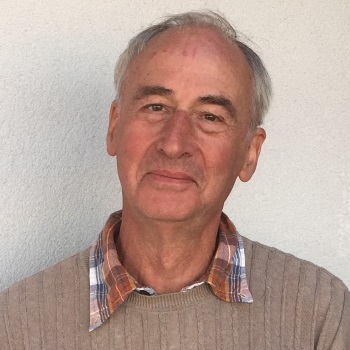
Professor Hugh Jenkyns, University of Oxford, UK

Professor Hugh Jenkyns, University of Oxford, UKHugh Jenkyns has 45 years’ research experience primarily focused on the palaeoceanography and palaeoclimatology of Jurassic and Cretaceous marine and continental sediments. His fields of interest range across geochemistry, particularly in the use of traditional and non-traditional isotopes, sedimentology and stratigraphy. He co-wrote the first paper on the causes and consequences of ‘oceanic anoxic events’ in 1976, and has championed the application of chemostratigraphy to the understanding of Mesozoic environmental change. He published the first palaeotemperature data from the Cretaceous of the Arctic Ocean. He has considerable experience of Deep Sea Drilling (DSDP, ODP, IODP), both shore-based and at sea, having participated in Legs 33, 61 and 143 in the Pacific Ocean. He was a graduate student at Leicester University, working on Jurassic pelagic sediments in Sicily, a post-doctoral research fellow in Basel, Switzerland and lectured in Cambridge and Durham before moving to Oxford, where he is Professor of Stratigraphy. |
|
| 12:30 - 12:40 | Discussion |
Chair

Professor Dan Lunt, University of Bristol, UK

Professor Dan Lunt, University of Bristol, UK
Dan Lunt is Professor of Climate Science at the University of Bristol. Dan has over fifteen years’ experience in developing and running climate models in order to address questions and hypotheses related to past and future climate change. A particular focus has been on climate and climate sensitivity in the past. He is leader of the international DeepMIP project (www.deepmip.org), and its predecessor, EoMIP. He was a contributing author to the IPCC AR5, and in 2010 was awarded the Philip Leverhulme Prize for his work on climate modelling. Dan was founding Chief Executive Editor of Geoscientific Model Development, an EGU journal designed primarily for the description and evaluation of models of the Earth System.
| 13:30 - 14:00 |
Strategies in times of crisis
Increasing atmospheric CO2 radically alters the Earth system, with major implications for ecosystems globally. However, the impacts on marine biodiversity remain poorly understood and hence quantifying the full range of natural responses to climate change remains a key challenge. The ongoing truly remarkable rate of climate change is predicted to challenge organisms' adaptation to novel environments. What we need to understand are (i) physiological impacts, (ii) how species change their distribution, (iii) if changes in distribution impacts ecosystem services, and (iv) whether or not organisms can evolve thereby dampening the impact of climate change. Using computer tomography, we explore the internal structure of these tests to determine how their development and reproduction changed across periods of climate change. Data presented will be on test size, number of chambers, and size of the proloculus, and thereby development and reproduction, in benthic foraminifers, as well as community size changes in planktic foraminifers. The data shows clear regional differences which will link to the regional differences in the expression of climate change.

Professor Daniela Schmidt, University of Bristol, UK

Professor Daniela Schmidt, University of Bristol, UKProfessor Daniela Schmidt graduated from the University of Bremen in marine geology followed on with a PhD at ETH Zurich. She has been in the School of Earth Sciences at the University of Bristol since 2004 and received a Royal Society URF in 2006. She is a Paleobiologist focussing on understanding the causes and effects of global warming and ocean acidification, both in the modern era and in geological time. With her group, she has been quantifying the effects of climate change on calcification response, migration, extinction and structural implications for framework building species. She is a Wolfson Merit Award Holder and contributed as a Lead author to the last IPCC assessment for WGII. |
|
|---|---|---|
| 14:00 - 14:10 | Discussion | |
| 14:10 - 14:40 |
Mechanisms driving biotic change: A day in the life of a coccolithophore
Understanding how and why species exhibit response to local and global environmental change is more difficult than it appears. It may be very tangible for the poster child of modern climate change - polar bears – that are faced with less and less sea ice on which to hunt on each year. It is much more of a conundrum for species and communities that show responses to climate change across timescales greater than that of the individual, and experiencing environmental change that is heterogeneous and localized in character, except for all but the most extreme events. It is even more difficult when dealing with the world of microscopic phytoplankton, here coccolithophores, which comprise individual cells with very short lifespans (several days), occurring in incomprehensibly huge numbers, often with global distributions. Arguably, no individual/cell experiences the direct pressure of climate change, with each individually responding to its own microenvironment for just a day. Yet it is too easy to think about these species as an interconnected super-organism that over centennial to millennial timescales collectively morphs and reacts to environmental forcing. How is it that we really end up observing cumulative trajectories of biological success or failure, where the species adapts or is exterminated by climate change? Perhaps it is obvious that a bottom-up, cellular-level, perspective would take us closer to understanding biotic responses to climate change and over the last few years we’ve been privileged to have the opportunity to do just that for the fossil record of coccolithophores. We have accessed cellular information by tapping into a rich archive of exquisitely preserved intact cell coverings – coccospheres – by targeting sedimentary successions with exceptional preservation. These coccospheres preserve invaluable information about the original living cell including its size, levels of particulate organic carbon and inorganic carbon, ontogeny, and growth phase – information that tells us about their reproductive success and their potential role in local biogeochemical cycling. This talk includes recent highlights from this work including new insights into the community cell size structure of fossil coccolithophore communities; the biogeochemical consequences of associated cellular organic and inorganic carbon; how our questions of cellular calcification and the architecture of coccospheres have driven new experiments with modern coccolithophores, and how these parameters respond to intervals of rapid climate warming. 
Dr Samantha Gibbs, University of Southampton, UK

Dr Samantha Gibbs, University of Southampton, UKSamantha Gibbs is a Royal Society University Research Fellow at the University of Southampton in Ocean and Earth Sciences where she has been for the last twelve years. Since having her first child three years ago, she works part-time, juggling life with her husband and two young children alongside research, teaching and making pottery. Her research focus is to understand one part of the marine ecosystem, the coccolithophorid phytoplankton that lie at the base of the food chain. Specifically, she uses the fossil record to address how coccolithophores have responded to past climate change and applies this information to help understand the future of modern plankton communities. In recent years she has moved in the direction of integrating modern and palaeo-biology, merging culture experiments with geological data, resulting in a shift towards a cellular-level focus on plankton evolution and its driving mechanisms. |
|
| 14:40 - 14:50 | Discussion | |
| 14:50 - 15:20 | Tea | |
| 15:20 - 15:50 |
The impact of shock heating on life on land during the Permian-Triassic extinction event
Many mass extinctions of life in the sea and on land have been attributed to shock heating, and in the case of the Permian-Triassic and end-Triassic mass extinctions at least, driven by LIP volcanism. The Siberian Traps eruptions occurred in phases, but at the two peak extinction horizons, in the latest Permian and earliest Triassic respectively, oxygen isotopes indicate flash heating of 15–20oC. This raised ambient temperatures in most oceans and continental interiors to 35–40oC. The warming and associated acid rain killed forests on land and led to massive stripping of vegetation and soils. A spike of enhanced silica and organic matter input into shallow oceans marks the erosive episode and suggests that filter-feeders on the shelf may have been swamped. The atmospheric heating led to major effects on ocean circulation and seafloor anoxia, a key killing agent in the oceans. Life was killed by hypoxia (low oxygen), hypercapnia (high carbon dioxide), global warming, aridity (desiccation), acid rain and wildfires. Physiological experiments show that some animals can adapt to temperature rises of a few degrees, and that some can survive short episodes of increases of 10oC. However, most plants and animals suffer major physiological damage at temperatures of 35–40oC. In total, some 90% of species died out during each extinction episode. These shock heating episodes were repeated several times through the first 5 Myr of the Triassic, so delaying full ecosystem recovery until 7–8 Myr into the Triassic. 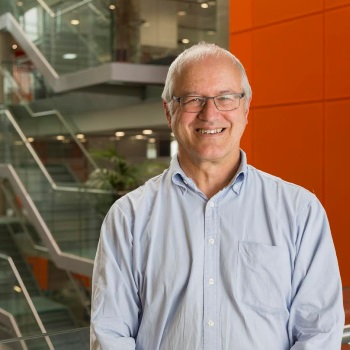
Professor Mike Benton FRS, University of Bristol, UK

Professor Mike Benton FRS, University of Bristol, UKMike Benton has studied mass extinction for some time, and his particular focus is the Permian-Triassic mass extinction, 252 million years ago. He is particularly interested in the physical and biological effects of mass extinctions on land, and has worked in the field in Russia and China, pursuing these questions. Mike is a vertebrate palaeontologist, so this interest extends to studies of reptiles of the Triassic and the origin of the dinosaurs. He has written many papers and books on these topics, and has supervised over 60 PhD students. He is head of the Palaeobiology Research Group in Bristol, and the world-famous Masters in Palaeobiology, from which more than 350 students have graduated. |
|
| 15:50 - 16:00 | Discussion | |
| 16:00 - 16:30 |
Climate change and the importance of plankton dynamics
Biology has a two-fold role in understanding past climatic events and states. On the one hand, the organic and inorganic remains of various organisms provide the primary lens through which we see past events. And on the other, they record the response of life itself to past changes in the environment. This presentation shows problems and solutions arising from this two-fold role of life, focusing on population dynamics at the Paleocene Eocene Thermal Maximum. On the environmental side of the problem, it will show how the combined affects of differential population dynamics and sediment mixing helps explain a major conundrum raised over fifteen years ago by individual-based isotopic records across the event. Incorporating population dynamics and sediment mixing into earth system models provides an exciting means of constraining the relative duration of the onset of the event and reconciling geological records from locations around the world. On the biological side, the question of whether symbiotic plankton bleach (i.e., expel their symbiotic algae) in response to global warming considering records from low, mid-, and high latitudes will be revisited. Population dynamics, along with sediment mixing and other biological effects, have long been acknowledge but seldom quantitatively incorporated in the study of past climatic events –the goal of this talk is to provide the motivation and some of the tools to encourage this in future studies. 
Professor Pincelli Hull, Yale University, USA

Professor Pincelli Hull, Yale University, USAPincelli Hull is an Assistant Professor in the Department of Geology & Geophysics at Yale University. She received her PhD from the Scripps Institution of Oceanography in 2010 and joined the faculty at Yale in 2013 after postdoctoral research at Yale University and the University of Konstanz. Hull’s research focuses on the relationship between open ocean life and the environment during mass extinctions, abrupt climatic events, and changes in background climate state. Her publications span events from the late Cretaceous to the modern day, and typically focus on the fossil record of plankton, particularly planktonic foraminifera. She has recently been awarded a Sloan Research Fellowship in Ocean Science for her work. |
|
| 16:30 - 16:40 | Discussion | |
| 16:40 - 17:00 | Summary discussion |
Chair
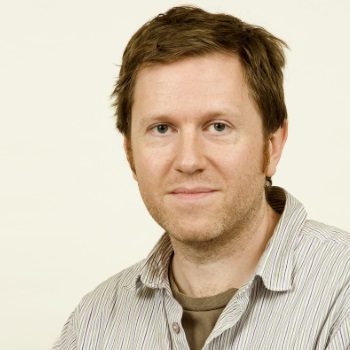
Professor Gavin Foster, University of Southampton, UK

Professor Gavin Foster, University of Southampton, UK
Gavin is a professor of isotope geochemistry at the University of Southampton. His research is primarily concerned with using novel isotopic techniques to gain insights into how and why the Earth’s climate has changed over geological time. Much of his recent research efforts are focused on using boron isotopes in the calcareous shells of foraminifera to reconstruct the state of the oceanic carbonate system in the geological past. In particular he is interested in the mechanisms responsible for the natural CO2 changes that accompanied the waxing and waning of the ice-sheets throughout the Pleistocene, and the role of CO2 in gradual, and sometimes rapid, climate change during the Cenozoic.
| 09:00 - 09:30 |
Drivers of the end-Permian hyperthermal: system failure?
In the context of the archetypal hyperthermal (the PETM), the end-Permian event presents an extreme comparison. Unlike the relatively benign effects of the PETM on the biota (apologies to the benthic foraminifera), the end-Permian event was the largest mass extinction of animals in Earth history. Yet the two events left similar records in the carbon isotope composition of limestones, reflecting potentially quite similar carbon cycle perturbations, both likely triggered by volcanism. Why was one a mass killer and the other not? Despite the similar isotope record, there are differences: the end-Permian event occurred at the culmination of Paleozoic-long environmental trends reflected in the sedimentological, isotopic, and geochemical records, reflecting maxima or minima in sea level, continentality, weathering rates, hydrothermal activity, and tectonic uplift. Moreover, the seafloor at the time may have been largely free of the blanket of acid-absorbing calcium carbonate that has existed to varying extents and thicknesses since the Jurassic. Thus, the pre-existing conditions for these two disturbances differ substantially. While the carbon isotope records are strikingly similar in magnitude and rate of change, they may have resulted from quite different rates of carbon injection: negative carbon isotope anomalies are the consequence essentially of the product of the rate of carbon addition and its isotopic composition: the same perturbation can result from slower addition of a source depleted in the heavy isotope (methane or volatilized organic matter addition triggered by a small volcanic addition) or a faster addition of carbon from a heavier source (e.g., the volcanism itself). Thus the more acute response in the end-Permian may indicate that much of the carbon addition was magma-sourced. Needed is a second proxy, e.g., the B isotope proxy of pH as being applied to the PETM, to constrain the source and rate of C addition. However, more voluminous release of CO2 and consequent warming could have overwhelmed the ocean uptake, seafloor carbonate dissolution, and silicate weathering feedbacks that more effectively damped the PETM perturbation. The styles of volcanism potentially differed substantially, with greater subaerial eruption and injection of toxic materials into the atmosphere during the end-Permian Siberian Traps event. Clearly the duration of C cycle disruption, the scale of biotic impact and delay of recover, and the persistence and extent of anoxia distinguish the end-Permian from the PETM. Whether the difference was in the rate and duration of C addition or in the pre-existing conditions remains to be determined. 
Professor Lee Kump, Pennsylvania State University, USA

Professor Lee Kump, Pennsylvania State University, USALee R. Kump is Professor and Head of Geosciences at Penn State. He received his A.B. degree in geophysical sciences from the University of Chicago in 1981 and his Ph.D. in marine sciences from the University of South Florida in 1986. He has been on the faculty of the Department of Geosciences at Penn State since 1986. He is the senior author of the textbook "The Earth System," now in its third edition. Other books include “Dire Predictions: Understanding Climate Change,” co-authored with Michael Mann, now in its second edition, and “Mathematical Modeling in the Geosciences: A Primer” with Rudy Slingerland. He has published over 100 refereed papers and book chapters on a wide range of Earth science topics. Kump's research interests include the evolution of ocean and atmosphere composition on geologic time scales, biogeochemical cycling in aquatic environments, the behavior of nutrient and trace elements in natural environments, human impact on coastal environments including coral reefs, and environmental change during extreme events (mass extinctions, extreme warm periods, glaciations) in Earth history. Kump is a fellow of the Geological Society of America, the American Geophysical Union, the Geochemical Society, the European Association of Geochemistry, and the Geological Society of London. He received the Distinguished Service Medal from the Geological Society of America in 2000, and is a Distinguished Alumnus of the University of South Florida (2009). His research has been featured in documentaries that have aired on NOVA Science Now, the Discovery Channel, National Geographic, BBC, Australian Broadcast Corporation, and the History Channel. |
|
|---|---|---|
| 09:30 - 09:40 | Discussion | |
| 09:40 - 10:10 |
Orbital forcing of Early Eocene hyperthermals
The Paleocene-Eocene Thermal Maximum (PETM) is the first of a series of punctuated global warming events, termed hyperthermals, that mark the hot climate conditions of the early Eocene (~56 to ~48 million years ago). The occurrence of these hyperthermals are generally explained by the rapid increase in greenhouse gas forcing (carbon dioxide and methane) as portrayed by distinct negative carbon isotope excursions in both marine and terrestrial realms. So far, approximately 20 hyperthermals were identified based on the positive covariance between oxygen and carbon isotope excursions in high-resolution deep sea benthic foraminiferal records derived in particular from the sedimentary successions of the Walvis Ridge in the southern Atlantic ocean that were drilled during Ocean Drilling Program leg 208 in 2003. Despite that the origin of the carbon released during these events is still highly debated, their regular occurrence points towards a perturbation in the global carbon cycle and associated global temperatures on dominantly eccentricity-paced (i.e. 405 and 95-125 kyr) time scales. 
Professor Lucas Lourens, Utrecht University, the Netherlands

Professor Lucas Lourens, Utrecht University, the NetherlandsLucas Lourens graduated in 1994 on Plio-Pleistocene climate changes in the Mediterranean Sea and continued his research through postdoc positions at the Utrecht University, Free University of Amsterdam and CNRS-Cerege in Aix en Provence. He received a NWO-funded Vidi award in 2002 to study the changes in the speed of the Earth’s rotational axis on geological time scales and became a permanent staff member of the Stratigraphy & Palaeontology group of the Faculty of Geosciences (UU). He participated in ODP/IODP expeditions to the Walvis Ridge (Leg 208) and Gulf of Cadiz (EXP 339). In 2010, he received the prestigious NWO-funded Vici award, which enabled him to build his own research group with as main theme to investigate the influence and evolution of astronomically-forced climate changes during the Cenozoic Greenhouse and Icehouse Worlds. From February 1, 2011 he became appointed as chair of the Paleoclimatology group and was honoured with the Jean Baptiste Lamarck medal for his achievements in stratigraphy at the European Geosciences Union of 2016. |
|
| 10:10 - 10:20 | Discussion | |
| 10:20 - 10:40 | Coffee | |
| 10:40 - 11:10 |
Volcanic causes for past hothouse climates
Mass extinctions and transient climate events commonly coincide in time with the formation of Large igneous provinces (LIPs). Classic examples include the end-Permian event which coincides with the Siberian Traps, the end-Triassic with the Central Atlantic Magmatic Event (CAMP), the Toarcian with the Karoo LIP, and the Palaeocene-Eocene Thermal Maximum (PETM) with the North Atlantic Igneous Province. The emplacement of igneous sills into sedimentary basins, and the associated contact metamorphism of the host sedimentary rocks, has emerged as a major player in the understanding of the link between LIPs and past climatic change. This presentation stresses that for these processes to have an environment impact, the gases need to be transferred to the surface and atmosphere on a very short timescale, which is borne out by dating of the sill complexes in question. We have identified a range of different pipe structures that acted as gas transport channels during the end-Permian, the Toarcian, and the PETM, and present a classification and detailed overview of the key parameters governing their formation. This talk shows that the potential for degassing of greenhouse gases, aerosols, and ozone destructive gases in sedimentary basins affected by volcanism is substantial, and can explain the triggering of both transient climatic events and mass extinctions. 
Dr Henrik H. Svensen, Centre for Earth Evolution and Dynamics (CEED), University of Oslo, Norway

Dr Henrik H. Svensen, Centre for Earth Evolution and Dynamics (CEED), University of Oslo, NorwayResearch Professor at Centre for Earth Evolution and Dynamics, University of Oslo. He has a background in metamorphic fluid geochemistry and contact metamorphic phase equilibria. Svensen has worked on volcanic and metamorphic processes in sedimentary basins since 2001, focussing on the Large igneous provinces in Karoo, Siberia, and the North East Atlantic. His main research interest is to understand the role of volcanism in triggering mass extinctions and rapid climatic changes. |
|
| 11:10 - 11:20 | Discussion | |
| 11:20 - 11:50 |
An independent constraint on the duration of the Paleocene-Eocene CIE onset from cosmic spherule abundances
The P-E boundary hyperthermal event is considered a geologic analog to our current warming. However, the rate of carbon release associated with the onset of the P-E event has not been adequately determined by an independent empirical means from an expanded section. Modeling efforts have attempted to address the duration of the onset, but the resultant estimates are only as reliable as the available input records, the majority of which come from slow sedimentation localities in the open ocean. Here we place an independent empirical constraint on sedimentation rates from two P-E shelf localities on the Atlantic Coastal plain (Wilson Lake-B and IODP Leg 174AX at Millville) by determining the abundance of cosmic spherules in the Vincentown Fm. and overlying Marlboro Clay, the base of which is coincident with the onset of the carbon isotope excursion (CIE) that defines the P-E boundary. Because the flux of cosmic dust to Earth’s surface is known and is relatively constant on short timescales, the accumulation of extraterrestrial material in sediments can provide surprisingly precise estimates of bulk sedimentation rates. Exploiting this known flux, we use the cosmic spherule abundance in the upper Vincentown at Wilson Lake to establish the baseline sedimentation rate as ~1.6 cm/kyr. Against this backdrop, we find a sharp ~70-fold increase in sediment accumulation rate in the lower Marlboro, concomitant with the base of the clay. We note that our rates for the Marlboro are only ~4-5-fold higher than previously published estimates based on foraminifera accumulation. At this sedimentation rate, the duration of the 3‰ 13Cbulk onset recorded at Wilson Lake spans less than 0.35 kyr. The same exercise applied to micrometeorite counts from Millville yields a comparable result, making the CIE onset recorded there less than ~0.3 kyr. The remarkable agreement between the two sites is a testament to the robustness of the method. Preliminary counts from open ocean sites show a decrease in sedimentation rates through the onset of the event, opposite of what is observed on the shelves but in agreement with previous estimates based on extra-terrestrial 3He. These sedimentation rate determinations based on cosmic spherule accumulation are objective and reproducible, and the only noteworthy source of uncertainty is in the flux of extraterrestrial material to the planetary surface. These expanded shelf sections afford a level of resolution unfamiliar in the deep ocean and demonstrate that the onset of the carbon isotope excursion was at least centennial-scale at these sites. Future modeling efforts should account for these observations. 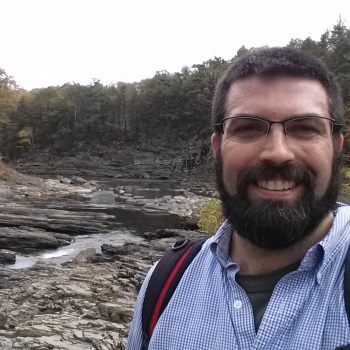
Professor Morgan Schaller, Earth and Environmental Sciences, Rensselaer Polytechnic Institute, USA

Professor Morgan Schaller, Earth and Environmental Sciences, Rensselaer Polytechnic Institute, USAMorgan F. Schaller is Assistant Professor of geochemistry and Associate Director of the Environmental Sciences program at Rensselaer Polytechnic Institute. He earned Bachelors degrees in both Geology and Biology from Binghamton University, completed a PhD at Rutgers University, followed by postdoctoral research positions at Rutgers and Brown University. His primary research focuses on the long-term variation in atmospheric gas concentrations and their influence on deep-time paleoclimate and the evolution of complex life. Professor Schaller uses stable isotope and vapor inclusion geochemistry to study the detailed records of mass extinctions and other major events as components of an evolving Earth system. |
|
| 11:50 - 12:00 | Discussion | |
| 12:00 - 12:30 |
Constraining the rate of PETM onset
It is the rate of current and projected future warming that makes anthropogenic climate change particularly challenging for natural ecosystems. In attempts to use episodes of climatic change in the geologic past as analogs for the future, therefore, timescale is key. The Paleocene-Eocene Thermal Maximum (PETM, ~56 Ma) has been suggested as the best, most recent example of rapid carbon release and warming. The PETM is characterized by a geologically abrupt negative carbon isotope excursion, global warming, and ocean acidification, all of which point to massive carbon release to the atmosphere and/or oceans. Yet the duration of the onset, here defined as the time interval between pre-PETM and minimum carbon isotope values, remains highly debated. Estimates have ranged from decadal to tens of thousands of years. The difficulty of utilizing traditional methods for age determination to constrain rapid events, combined with poor preservation of the PETM onset in many geologic sections, is responsible for the large discrepancy between estimates. Here the results from the Earth System Model cGENIE are used to look for fingerprints of carbon release rate within the atmosphere, oceans, and sediments that may be preserved in the geologic record. These experiments focus on identifying spatial patterns in the propagation timescale for carbon isotopic and temperature anomalies through the ocean. Applied to existing PETM datasets, these estimates support an onset for the PETM of between two to five thousand years. 
Professor Sandra Kirtland Turner, University of California, Riverside, USA

Professor Sandra Kirtland Turner, University of California, Riverside, USASandra Kirtland Turner is an assistant professor of paleoclimatology and paleoceanography at the University of California, Riverside. Her research focuses on applying a coupled data-model approach to quantitatively reconstruct carbon cycle and climate processes on a warm Earth, particularly in response to episodes of rapid climate change. She specializes in the generation of high-resolution geochemical records from ocean sediment cores and focuses on interpreting these records through the development and application of Earth system models that can simulate physical and biogeochemical process in the atmosphere, oceans, and deep-sea sediments over a variety of timescales. |
|
| 12:30 - 12:40 | Discussion |
Chair

Professor Pincelli Hull, Yale University, USA

Professor Pincelli Hull, Yale University, USA
Pincelli Hull is an Assistant Professor in the Department of Geology & Geophysics at Yale University. She received her PhD from the Scripps Institution of Oceanography in 2010 and joined the faculty at Yale in 2013 after postdoctoral research at Yale University and the University of Konstanz. Hull’s research focuses on the relationship between open ocean life and the environment during mass extinctions, abrupt climatic events, and changes in background climate state. Her publications span events from the late Cretaceous to the modern day, and typically focus on the fossil record of plankton, particularly planktonic foraminifera. She has recently been awarded a Sloan Research Fellowship in Ocean Science for her work.
| 13:30 - 14:00 |
What can rocks tell us about the strength of carbon cycle feedbacks in our future hyperthermal?
The Palaeocene-Eocene Thermal Maximum (PETM, ~56 Ma), with its multiple lines of attendant evidence for massive greenhouse gas release and global-scale warming, is regarded as a highly plausible future analogue. However, because the onset of the PETM likely took place at a rate at least one, if not two, orders of magnitude slower than current century-scale anthropogenic warming, it is uncertain what we can learn with regard key societal concerns such as ecological responses to climate change, except perhaps to place a lower limit on potential future disruption. Instead, one might ask what the PETM might reveal regarding the sensitivity of surficial, reduced carbon stores (e.g. vegetation and soil carbon, permafrost, marine hydrates) to warming, and hence the strength of positive feedbacks between atmospheric CO2 and climate change. Indeed, almost all explanations to date for the PETM have relied either solely, or dominantly, on one or more of these carbon sources in conjunction with an initial triggering event. If carbon-climate feedbacks alone can drive 5 degrees C of global warming in the past, what does this mean for the future? The good news is that the PETM is likely to have been an event arising predominantly as the product of massive volcanism, rather than dominated by feedbacks between climate and reservoirs of reduced organic carbon. The bad news is that cold background climates, such as today, should be characterized by rather larger initial carbon reservoirs than warm climate states, meaning that even a weak feedback could release a substantial quantity of carbon. This presentation will attempt to reconcile both bad and good news and distinguish from any fake news, and discuss what we can and cannot (yet) learn from events such as the PETM about the future warming response to fossil fuel carbon release and the role and strength of feedbacks. 
Professor Andy Ridgwell, University of California Riverside, USA

Professor Andy Ridgwell, University of California Riverside, USAAndy Ridgwell is currently Professor of Earth System Science at the University of California, Riverside and Professorial Research Fellow at the University of Bristol, and in a prior incarnation, a Royal Society University Research Fellow. He writes computer models of global carbon cycling and climate, focusing on both past and future controls on the concentration of CO2 in the atmosphere its interaction with life on this planet. His interests span questions of evolution and extinction, causes and consequences of changes in ocean chemistry, and geoengineering of the Earths’ climate. He is a great proponent of computer (programming) literacy and greater accessibility of tools (models) to help understand the complexities (and uncertainties) in the dynamics and evolution of the Earth system. He lives in the Southern Californian mountains where he collects cats and Pokémon. |
|---|---|
| 14:00 - 14:15 | Discussion |
| 14:15 - 14:45 |
Hyperthermals in context: Past and Future
The early Eocene hyperthermals such as the Paleocene-Eocene Thermal Maximum (PETM) and the Eocene Thermal Maximum 2 (ELMO) represent the best analogues for massive carbon release into Earth's surface reservoirs throughout the Cenozoic. The hyperthermals are hence relevant case studies for current and future anthropogenic carbon emissions and climate change. Two aspects of the hyperthermals are of particular interest to our future, i.e., the onset duration of the events and the nature and timing of mechanisms and feedbacks that led to the recovery from the massive carbon cycle-climate perturbations. Are the characteristic time scales and drivers of the hyperthermals applicable to the current man-made perturbation? This presentation will put the hyperthermals into context of past and future background climate and perturbations. The discussion will include the geologic evidence for constraining the duration of the PETM onset and compare the PETM onset and carbon release rate to the time scale and rate of anthropogenic emissions. Similarities and differences between the hyperthermals and the long-term legacy of our fossil-fuel emissions will be pointed out. Finally, the duration of the main- and recovery phase of PETM and ELMO in the context of orbital forcing will be discussed. 
Professor Richard Zeebe, University of Hawaii at Manoa, USA

Professor Richard Zeebe, University of Hawaii at Manoa, USADr. Richard E. Zeebe is a faculty member at the University of Hawaii. His research focuses on the global carbon cycle, biogeochemistry, geology, paleoceanography, astrochronology and more. His interests range from physico-chemical properties of molecules and the biogeochemistry of foraminifera to the scale of the global ocean and the solar system. Together with Dieter Wolf-Gladrow he published a book on the CO2 chemistry in seawater which has been referred to as the CO2 survival kit. Dr. Zeebe received a Ph.D. in Physics from the University of Bremen (Germany). He has served as editor of the journals Climate of the Past and Paleoceanography. |
| 14:45 - 15:00 | Discussion |
| 15:00 - 15:30 | Tea |
| 15:30 - 16:00 |
Living on the Edge of Chaos: Climate Extremes During Hyperthermals
Extreme warm periods in the deep past are often formulated in terms of shifts in mean global or regional surface temperatures. Although surface temperature is an important metric for climate change, it is not the only variable that exhibits shifts between changing climate states. Changes in atmospheric state, chemistry, regional water cycles and high temporal frequency phenomena like weather are also key indicators of climate change. Many of these indicators directly affect the sustainability of life on Earth. Using the National Center for Atmospheric Research (NCAR) Community Earth System Model (CESM), the presentation will explore two particular hyperthermal periods of Earth’s deep past: the end-Permian (~252 Ma) and the Paleocene-Thermal Maximum (~55 Ma). For the end-Permian, it will be shown how simulations of extreme states in atmospheric chemistry significantly impact Earth’s surface climate. For the PETM, high spatial resolution simulations that exhibit extreme weather conditions that potentially persisted during the warm, moist climate of this time will be presented. Finally, simulations from projected future shifts in climate extremes due to increase greenhouse warming and relate these simulations to past hyperthermal events will be discussed. 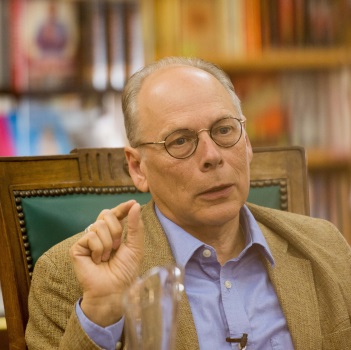
Dr Jeffrey Kiehl, National Center for Atmospheric, USA

Dr Jeffrey Kiehl, National Center for Atmospheric, USAJeffrey T. Kiehl, Ph.D. is a senior scientist at the National Center for Atmospheric Research, where he heads the Climate Change Research Section. Over the past 30 years he has carried out research on a wide range of scientific questions regarding anthropogenic climate change. He has published over one hundred articles on the effects of greenhouse gases on Earth’s climate, the effects of stratospheric ozone depletion on climate, and the effects of aerosols on the climate system. He is the co-author of Frontiers of Climate Modeling published by Cambridge University Press. His current research is on Earth’s deep past climates and future climate change. He is also participates in projects to better communicate climate science to the public. He chaired the Community Climate System Model project at NCAR for a number of years. He has been a member of the National Research Council’s Climate Research Committee and the Committee for Global Change and has served on a number of NRC panels over the past twenty years. He is a Fellow of both the American Meteorological Society and the American Geophysical Union. |
| 16:00 - 16:15 | Discussion |
| 16:15 - 17:00 | Panel discussion/Overview (future directions) |
